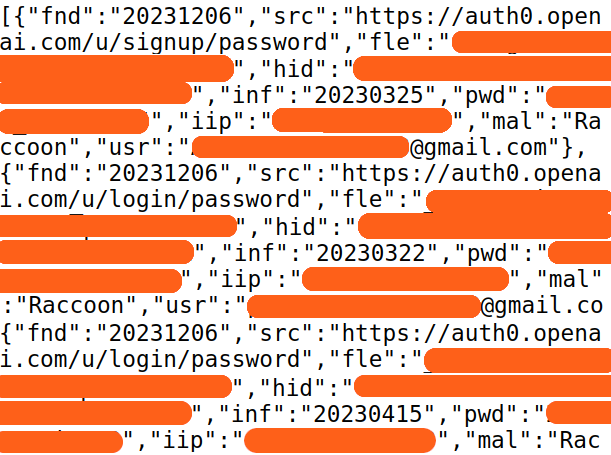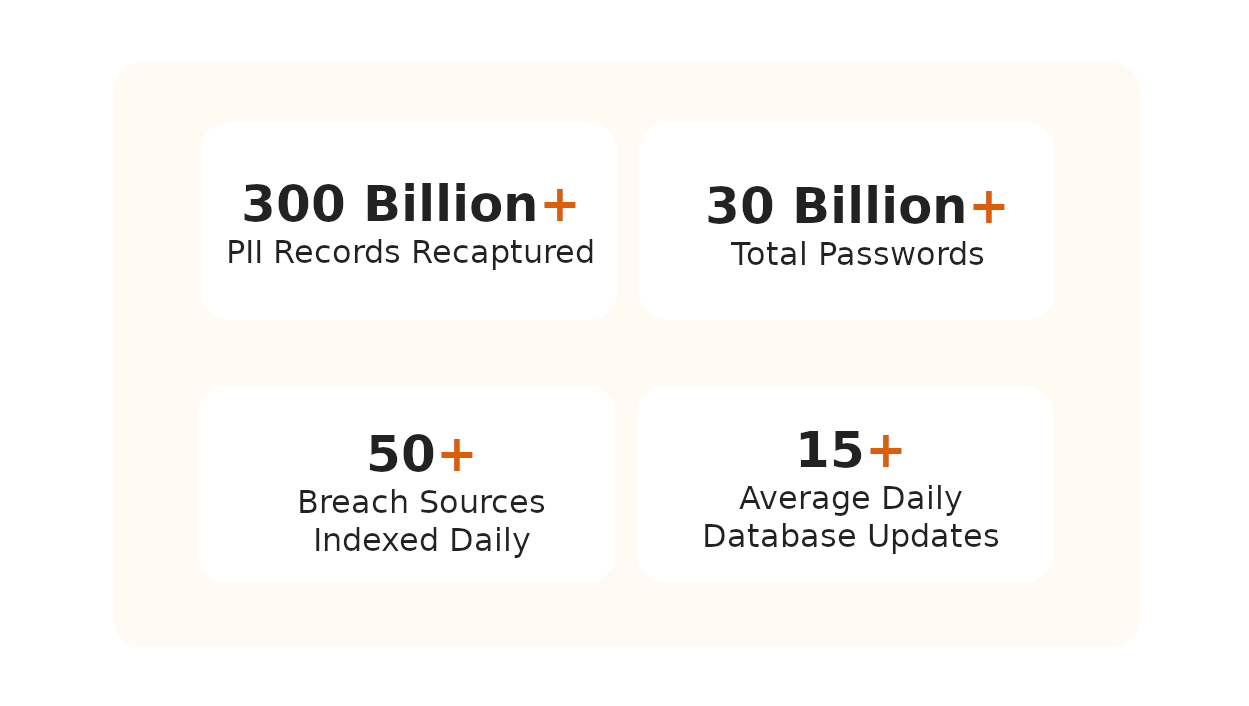What causes data breaches
Additionally, insider threats, such as disgruntled employees or contractors, can intentionally or unintentionally misuse or steal sensitive data. Another common cause is human error, such as accidental data exposure, misconfigured systems, or improper handling of sensitive data by employees. Physical theft or loss of devices containing sensitive data, weak access controls, lack of encryption, and outdated software can also lead to data breaches. Finally, third-party vulnerabilities, where a breach at a vendor or partner organization indirectly leaks your organization’s data as part of their breach.

Only 1 in 3 organizations discover a data breach on their own
The average cost of a data breach is USD 4.45 million
86% of breaches use stolen, weak or default passwords
Empower your security team with actionable threat intelligence with the #1 data breach detection software trusted by great companies from all over the world
Our team uses Breachsense data to gain initial access during pen testing and red team engagements. The API is simple to use and the support is always helpful and responds quickly.
Our Security Colony platform relies on Breachsense data as part of our dark web monitoring service. The data is continuously updated and high quality. Highly recommend!
We rely on Breachsense for a lot of data. Their frequent database updates, constant availability, and handling of big and small breaches alike means we are always covered.
Breachsense Is Perfect For
Penetration Testers
Red Teams
Enterprise Security Teams
Incident Response Analysts
M&A Research
Frequently Asked Questions
What is Data Breach Monitoring?
Data breach monitoring is the process of monitoring data breaches for mentions of specific individuals, brands, phone numbers, and other types of sensitive information. With data breaches becoming increasingly common, ongoing monitoring is essential for ensuring the safety of your customers’ and employees’ sensitive personal information.
How Are Data Breach Monitoring Work?
Breachsense continuously tracks millions of online sources, including IRC and Telegram channels, private cybercrime communities, ransomware marketplaces, and more. Your security team is notified the moment there are any mentions of your:
- Employee or customer account credentials or other sensitive data
- Login credentials to your C-level executive accounts
- Credentials for remote access servers like SSH, Remote Desktop, and FTP
- Internal company emails or documents
- Employee corporate or government-issued IDs
How Data Breach Monitoring Helps Prevent Cybercrime?
By detecting data breaches in real time, your security team will be able to react immediately before any damage is done. The moment a breach is detected, you can:
- Disable Compromised Accounts
- Prevent Fraudulent Purchases
- Upgrade Your Security Measures
Is A Data Breach The Same As A Data Leak?
It’s true that both terms - “data breach” and “data leak” - seem as if they referred to the same type of a cyber threat. In reality, however, they do have slightly different meanings. A data breach occurs where a third party gains unauthorized access, often malicious, to compromise sensitive information within a system or network. A data leak, on the other hand, usually means an unauthorized release of confidential data, whether intentional or unintentional by a third party but also an employee of a company.






